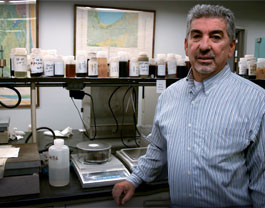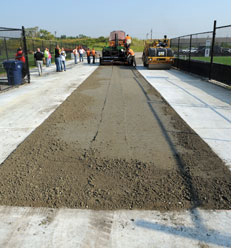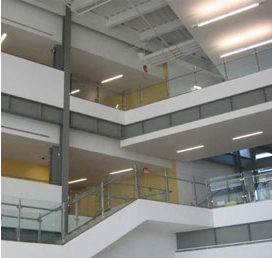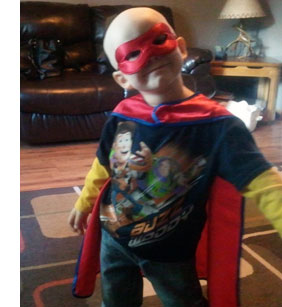He arrived in Chicago during a construction lull, but that didn’t dampen Len Burkart’s enthusiasm for the opportunities that lay ahead.
“That was 1985, and the boom of the early 80s had slowed down, especially in New Orleans where I’d been working,” Burkart remembers. “But I was excited to be here, making a fresh start.”
Before his move north, Burkart worked for concrete supplier Jimco Inc., earning his first Level 1 certification from the American Concrete Institute (ACI) in 1983. “Prairie brought me in to teach and test the QC staff on their technical knowledge,” he explains. “We wanted to be the best qualified team in the region, and that’s still our goal today.”
On May 11, ACI Illinois honored Burkart with the Henry Crown Award for 2014, reflecting his many contributions to our industry. Here, he comments on the evolution of concrete construction and the trends he feels will shape our future.
Len, describe your current role and how you got here.

I’ve been fortunate to work with some very talented people over the years, starting with the QC team and then, about 6 years ago, moving to Technical Sales under Chet McGrath. Then in 2010, I was put in charge of the newly created Technical Support Department reporting to Steve Fleming.
Today I manage a 4-member team. We work closely with engineers and contractors and serve as a resource for Prairie sales and delivery staff. Most of my time is spent at our Bridgeview offices, reviewing specs and working on technical questions of every kind. I also spend time in the field, tying together the theoretical mix designs with their real-life applications.
What was the first landmark project you worked on?
I’d say it was the tower at 311 South Wacker in Chicago, completed in 1990 with J.A. Jones Construction. At the time, it was the tallest reinforced concrete building in the world. It was a big breakthrough for Prairie because prior to this, Material Service Corp. was the go-to company for major downtown jobs of this kind. It gave us the chance to prove we could provide high-strength, pumpable mixes for high-rise construction. Today, Prairie is an industry leader in high-rise mix design.
What other projects stand out in your mind?
We had fun working on Trump Tower Chicago with McHugh Construction. There were 20 performance mixes on that job, including SCC and ultra-high-strength formulas. The mat pour alone took 22 continuous hours and involved 5,000 yards of SCC. We were there around the clock – we’d take naps in hotel rooms, go back to the site and just keep going.
I also enjoyed working on slag mixes for durable pavements at O’Hare Airport and low-heat mixes for the Corn Products International plant in Bedford Park, Illinois with Lindblad Construction.
What trends do you feel will be critical in the years ahead?
Green building will be our greatest focus. Every decision-maker is thinking about ways to reduce the carbon footprint of new structures. Extending concrete life and incorporating recycled materials are increasingly important. The Illinois Tollway is one of our most active partners — we’ve worked with them to deliver bridge deck mixes that greatly reduce cracking and hot-patch mixes made with slag and other recycled materials.
Concrete providers can be proactive in suggesting green alternatives. For example, when we see a job with massive footings where the contractor needs high-strength concrete, we ask them to think about using a low-heat mix. By offering good ideas, we can help engineers and contractors lead the way.
How did it feel to receive the Henry Crown Award?
When I look at others who’ve received this award, I’m proud and humbled to be in their company. But the honor isn’t just mine; it belongs to our whole team. Nothing moves forward without the contributions of each person. So I’m thankful for the recognition, but even more thankful for the talented people I work with every day.






 United Materials
United Materials Superior Materials
Superior Materials Prairie Materials
Prairie Materials Canada Building Materials
Canada Building Materials VC Global
VC Global